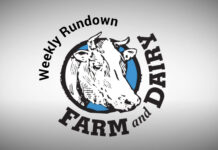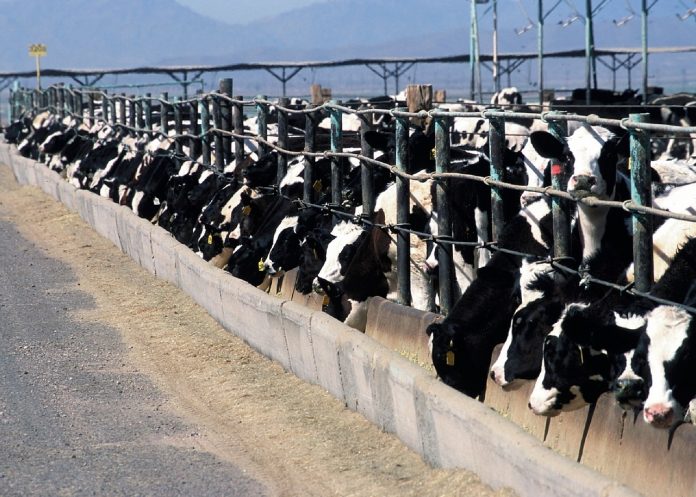Like farmers and ranchers, veterinarians love to pour concrete. Many build customized facilities dedicated to their animal health mission: examination rooms, operating theaters, cattle chutes, holding pens and loading docks.
Three Canada-based vets, however, are pouring enough concrete in far southwestern Nebraska to cover what they say will be a square mile—that’s 640 acres—of a “beyond state-of-the-art” 150,000-head cattle feedlot.
The concrete, they’ve explained in interviews, is the key to that “beyond” statement. With it, “tons” of “clean,” or dirt-free, cattle manure are “to be used by biodigesters to produce methane” that will offset some of the carbon footprints of the feedlot’s cattle.
Maybe, but concrete is one of the dirtiest, most CO2-intensive products known to mankind, and that intensity defies any claim of “green” by any concrete-heavy construction.
That’s science, not opinion. According to concrete engineers, on average, one ton of concrete produces 1,650 lbs. of CO2, mostly because the cement, concrete’s hardening agent, requires so much fossil fuel (heat) to make it.
If, as feedlot experts suggest, the 640-acre Nebraska feedlot uses 5-inch-thick concrete—a requirement to collect the “clean” manure for its proposed methane digesters—developers will then pour an estimated 428,000 cubic yards of concrete.
By itself, this 857,600 tons of concrete, with a CO2 bill of 1,650 lbs. per ton, will give the feedlot a carbon footprint of 1.4 billion lbs. before one steer steps onto it.
More so, the feed yard holds other not-so-green elements. For example, according to published reports, a typical feedlot animal produces 11 tons of manure per year. As the feedlot gears up, its initial 50,000 head will produce 550,000 tons of manure per year. Later, when the feedlot reaches its 150,000-head capacity, it likely will handle 1.65 million tons of manure per year.
Not all that massive manure pile can be fed into the feedlot’s yet-to-be-built manure digesters. As such, one of its owners claims it has “contracts with local farmers to spread the manure as fertilizer.”
Fine, but as the University of Nebraska calculates, if farmers were to spread 30 tons of manure per acre, the feedlot would need upwards of 55,000 acres to hold its annual manure production before any digester is built.
And then there’s the question of water. Western Nebraska, on average, receives about 19 inches of rainfall per year, or about half the U.S. national average.
Despite that dryness, the feedlot’s owners say they’ve acquired enough water through the purchase of 13 nearby irrigation wells. Those wells, they calculate, will supply the 1,262 acre-feet—or 411 million gallons—of water the enterprise requires annually. But critics aren’t so sure of those calculations, especially with the increasing impact of climate change on the region.
All these environmental concerns, however, skate right past the bigger issue in today’s cattle industry: Is a new 150,000-head feedlot even needed today when the U.S. beef herd is at a 63-year low?
Moreover, who stands to pay the price for its entrance into this low-margin sector of U.S. agriculture? Smaller competing feedlot operators in the region? Local residents, who soon will have 150,000 water-using, manure-making cattle as neighbors?
“Worse,” says Mike Callicrate whose Kansas-based Callicrate Cattle Co. is less than an hour’s drive south of the new feedlot. “Everything COVID taught us that we were doing wrong—big feedlots, big meat packers, too-long supply chains—we’re now doing again.”
Instead, he said, “We should be doing the opposite: hundreds of small feedlots, dozens of small-sized meat packers, more vibrant communities. We should be building resilience, not monuments to the failing past.”














Yikes the absurdity of taking published data on feedlot manure production at face value without probing it should embarrass the author. 11 tons of *wet* manure per year. Can you imagine a steer consuming anywhere close to 11 dmt of feed, let alone dispensing of it? If you want readers to take you seriously, write seriously.
Perfect response John!!
More is not better ‘ Even expanded ASH in the Concrete might It Paula Larson Niobrara Nebraska
It Paula Larson Niobrara Nebraska
Screen the Feedlot, poor cows.
Meat isn’t even good for humans, f….idiots.
All about money, innocent are sacrificed
The cow killers need to be blended up and fed to the wild animals.
I gree 100 percent. If we do not promote the rural cattle industries and local abitours the community’s will suffer. In northern Canada the ranching industry is in trouble with the age of our ranchers retiring. There has never been a better time to supplement income with select logging on our farms. Ranchers need to look at their forests as a crop and not clear-cut when they have a bad year. I have 1250 acres and can harvest $50,000 worth of timber off without changing the health of the forests and grazing areas. Combine the two industries like our settlers did and u will see the younger generation start to take notice. This makes a great environment to raise a family and community.
This feedlot is a done deal. They held their Open House the day after this article was written. What is the point of bringing these matters up NOW? If you felt the need to broadcast the issues that exist, why was it not done months ago, when it could possibly have made a difference? The people behind this feedlot have been completely transparent throughout the entire process. It’s not as though they tried to sneak something by anyone. So I ask again, why write and publish this article NOW?? Are you just trying to initiate discord? What exactly is the motive???
This article is ridiculous! 11 tons of manure per animal?
According to any number of Land Grant university–take your pick–sources, a fattening steer on a “high forage diet” will produce 59 to 60 lbs of manure per day. That means in one year, the steer (or “pen space” because the there will be an animal filling it year around) produces 21,900 lbs. of manure, or 10.95 tons, per year.
(Source: https://extension.usu.edu/agwastemanagement/manure-management/how-much-manure)